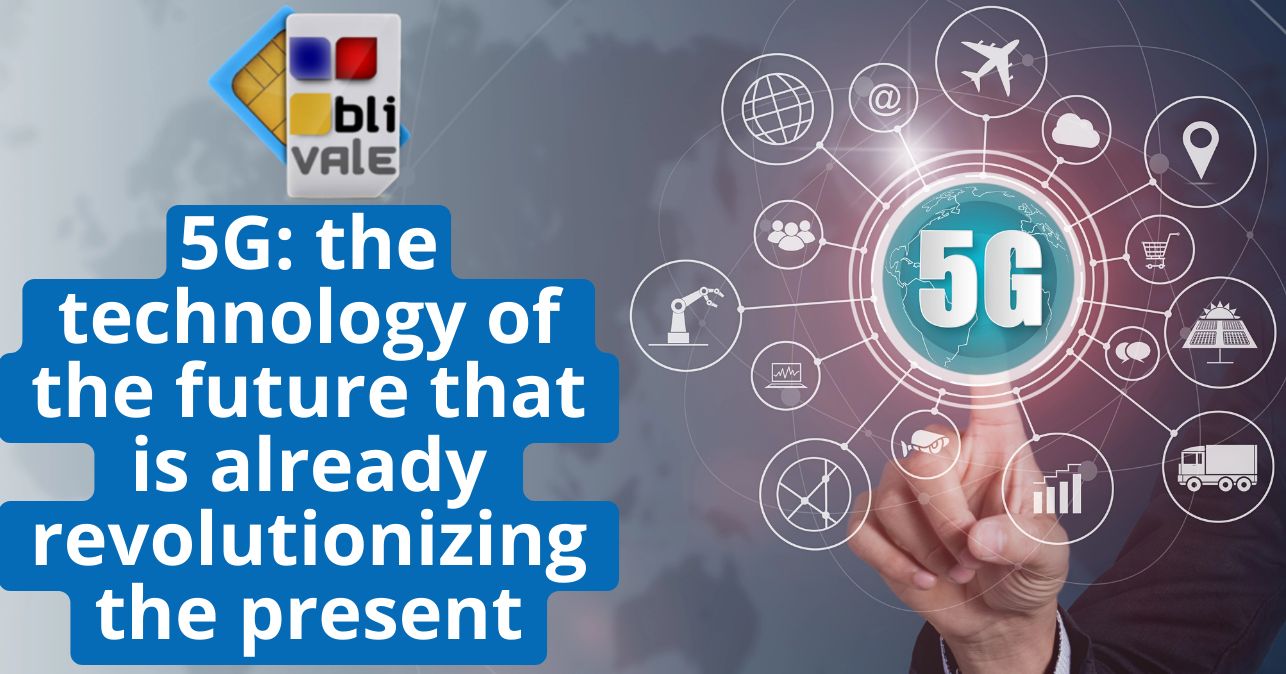For a couple of years, 5G, the new generation of mobile communication technology, has become an increasingly widespread reality throughout the world. This innovative telecommunications network is rapidly replacing previous 4G and 4G LTE technologies, offering significantly higher performance in terms of speed, latency and capacity.
5G is much more than just an upgrade to mobile connectivity - it is a true technological revolution destined to profoundly transform the way we live, work and communicate. From smart cities to the Internet of Things, through artificial intelligence and autonomous driving, 5G is paving the way for new applications and opportunities that seemed like science fiction until a few years ago.
In this article, we will explore in detail the main advantages of 5G and why this technology is becoming increasingly indispensable for our hyper-connected society.
Unprecedented speed and responsiveness
One of the main strengths of 5G is its unprecedented connection speed. Compared to 4G networks, 5G can achieve download speeds up to 20 times faster, with theoretical peaks of over 10 Gbps. This results in virtually instant loading and video streaming times, as well as an extremely smooth and responsive user experience.
This enormous bandwidth capacity is critical to supporting applications that require the transfer of large amounts of data in real time, such as virtual and augmented reality, telemedicine, autonomous driving and Industry 4.0. Thanks to 5G, these technologies can finally express their full potential, revolutionizing various sectors and improving our quality of life.
Latency reduction
In addition to connection speed, 5G also stands out for its very low latency, i.e. the time it takes for data to travel from source to destination. While 4G networks have an average latency of 50-100 milliseconds, 5G can reach values below 10 milliseconds.
This feature is critical for real-time critical applications, such as autonomous driving, robotic surgery and industrial safety systems. With such low latency, data can be transmitted and processed almost instantaneously, enabling rapid and precise reactions in potentially dangerous or high-risk situations.
Additionally, 5G's reduced latency is essential for the Internet of Things, allowing billions of connected devices to communicate seamlessly and without delay, improving the efficiency and reliability of many automated processes.
Greater network capacity
Another key advantage of 5G is its ability to handle a much higher number of connected devices than previous generations of mobile networks. While 4G can support up to 100,000 devices per square kilometer, 5G can support up to 1 million devices per square kilometer.
This enormous connection capacity is essential for the expansion of the Internet of Things, which involves connecting billions of sensors, devices and smart objects around the world. With 5G, it will be possible to create increasingly extensive and widespread IoT networks, enabling advanced applications such as smart cities, precision agriculture and industrial automation.
Furthermore, the greater capacity of 5G allows for better management of data traffic, avoiding congestion and guaranteeing a stable and reliable connection even in situations of high network use, such as sporting events or public events.
Greater energy efficiency
An often overlooked aspect of 5G is its greater energy efficiency compared to previous mobile connection technologies. Thanks to innovations such as Massive MIMO (Multiple-Input Multiple-Output) and adaptive modulation, 5G can reduce the power consumption of base stations by up to 90% compared to 4G.
This advantage is particularly important for the Internet of Things, where energy saving is crucial to guarantee the autonomy and longevity of connected devices, many of which are battery powered. With 5G, it will be possible to create more environmentally sustainable IoT networks, reducing the overall impact of telecommunications.
Furthermore, the greater energy efficiency of 5G translates into lower operating costs for operators, who will be able to offer more convenient and accessible services for end users.
Global rollout and widespread adoption
Despite being a relatively new technology, 5G is already experiencing rapid diffusion and adoption around the world. As of 2023, more than 70 countries have deployed 5G networks commercially, with China, the United States, Germany, Australia, South Africa, the United Kingdom and Finland among the global leaders.
Countries such as Italy, Canada, Russia and Brazil, although still in the implementation phase, have already started providing 5G SIMs and eSIMs to their citizens, preparing for the inevitable transition to this new technology.
This rapid adoption of 5G globally demonstrates the strategic importance of this innovation for the economy and competitiveness of individual countries. Indeed, 5G is considered a key enabler for the development of emerging technologies such as artificial intelligence, blockchain, digital payments and digitalisation in general.
Conclusion
In conclusion, 5G represents a real technological revolution destined to profoundly transform our way of living, working and communicating. Thanks to its unprecedented connection speed, reduced latency, increased network capacity and high energy efficiency, this new generation of mobile technology is paving the way for new applications and opportunities in numerous sectors, from the Internet of Things to 'artificial intelligence.
The rapid implementation and adoption of 5G globally demonstrates the strategic importance of this innovation for the competitiveness and economic development of individual countries. Therefore, it is essential that institutions and companies invest and commit to further accelerate the deployment of 5G, in order to fully exploit its enormous potential and drive the transition towards an increasingly connected and intelligent society.









